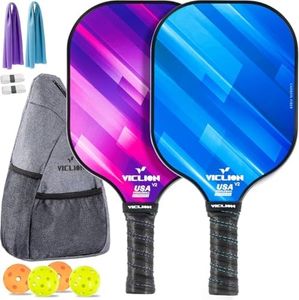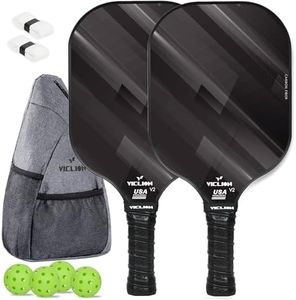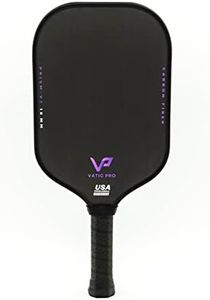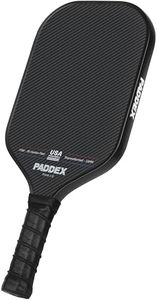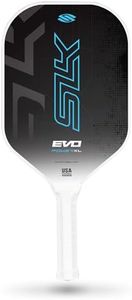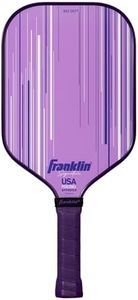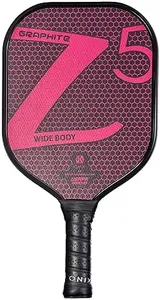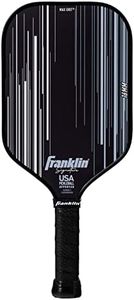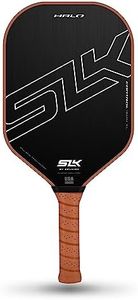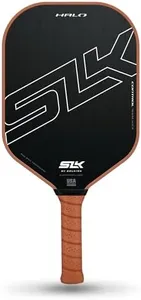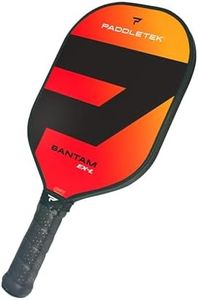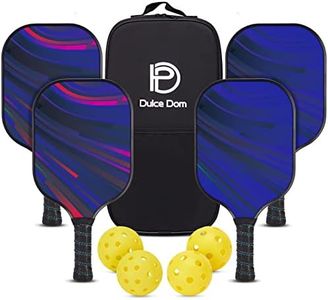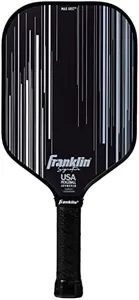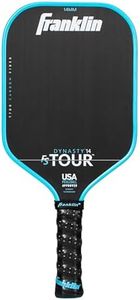We Use CookiesWe use cookies to enhance the security, performance,
functionality and for analytical and promotional activities. By continuing to browse this site you
are agreeing to our privacy policy
10 Best Pickleball Paddles
From leading brands and best sellers available on the web.By clicking on a link to a third party's website, log data is shared with that third party.
Buying Guide for the Best Pickleball Paddles
Choosing the right pickleball paddle can make a big difference in your enjoyment and performance on the court. With so many options available, it's important to match the paddle's features to your playing style, skill level, and physical preferences. Understanding the main specifications will help you narrow down your choices and make sure you end up with a paddle that's comfortable, responsive, and helps you play your best.WeightThe weight of a pickleball paddle is one of the most noticeable features. Lighter paddles (usually 6.5-7.3 ounces) are easier to maneuver, making them ideal for control and quick reactions, but they may provide less power on your shots. Heavier paddles (over 8 ounces) generate more power with less effort but can feel tiring over long games and may be harder to move quickly. To choose the right weight, consider your physical strength and whether you prefer control or power. Beginners often start with a mid-weight paddle—around 7.3 to 8 ounces—since it provides a balance between control and power.
Grip SizeGrip size refers to the circumference of the handle where you hold the paddle. Smaller grips allow more precise wrist action and are good for control, especially for smaller hands, while larger grips offer stability and comfort, suitable for bigger hands. If you’re not sure about your size, try different grip sizes (typically ranging from 4 to 4.5 inches in circumference), and pick one that feels secure but not restrictive. The right grip size helps prevent hand fatigue and injuries.
Paddle ShapePickleball paddles come in standard, wide-body, and elongated shapes. Standard paddles offer a good mix of reach and control, while wide-body paddles have a larger hitting area that’s more forgiving for beginners. Elongated paddles provide extra reach and are popular for advanced players focusing on power and leverage. Think about whether you value a larger sweet spot for control or more reach for aggressive play when choosing a paddle shape.
Core MaterialThe paddle's core is usually made from polymer, aluminum, or Nomex. Polymer cores are quiet, lightweight, and offer good power and a soft feel. Aluminum cores are lightweight and provide excellent control but can feel less powerful. Nomex cores are the hardest and most durable, delivering power but often being noisier and harder on the arm. Consider the playing environment and your preference for power vs. control; polymer is often the most versatile choice for all-around players.
Surface MaterialSurface material affects the paddle’s spin, durability, and overall feel. Common surfaces include fiberglass/composite (great for power and a lively feel), graphite (lightweight and responsive for touch and quick play), and carbon fiber (durable and offers both control and power). If you like to add spin or want more power, composite might suit you, while graphite and carbon fiber work well for finesse players who prioritize touch.
Paddle ThicknessPaddles vary in thickness, typically from 10mm to 16mm. Thicker paddles offer a softer feel, absorb more shock, and are easier on the arm, making them great for control players or those with joint issues. Thinner paddles feel firmer, offer more direct feedback, and tend to favor a hard-hitting, power-focused game. Choose your thickness based on whether you value comfort and control or quick feedback and power.
